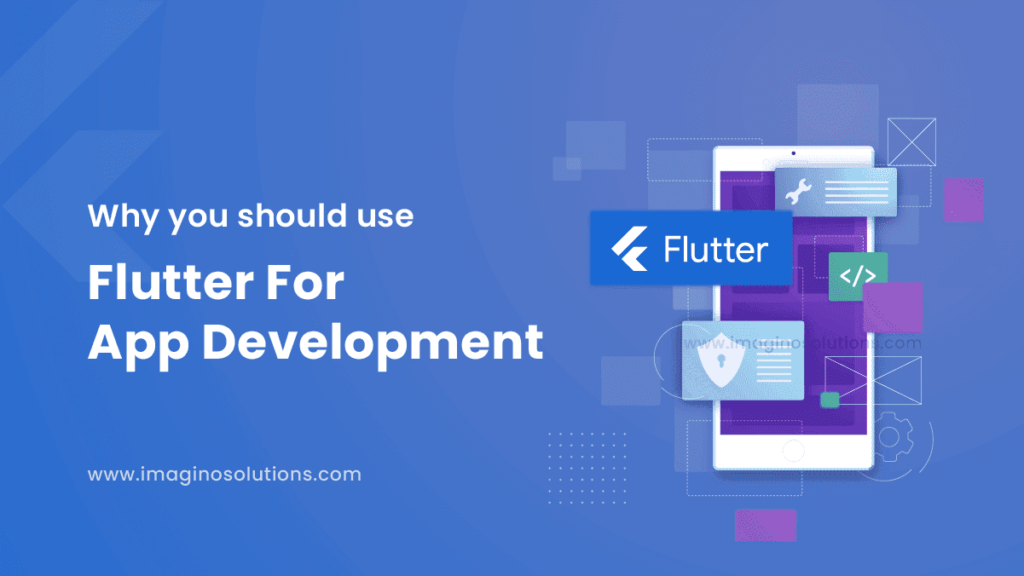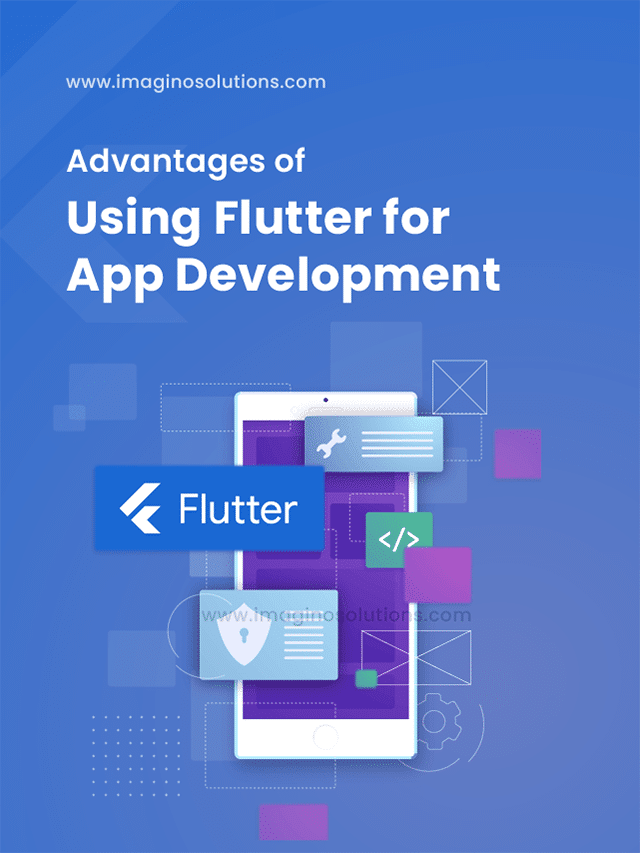There are an infinite amount of devices in our digital world, and they all run different operating systems. So, how do you go about developing a mobile app for your company that can quickly and effectively reach larger audiences without any issues? That’s a difficult problem to solve because small companies may lack the resources needed to create applications for various platforms.
How can small companies overcome these issues to stand out from the competition? What strategies can small companies use to get past these obstacles and stand out from the competition? The native cross-platform invention can help in this situation. When it comes to creating cross-platform apps, Flutter wins the top position.
According to some studies, flutter was used by 42% of software developers. The smartphone development platform Flutter has only been around for a short while, but it has already revolutionized the sector. Businesses can rapidly produce useful apps thanks to their creative approach, which combines the best of cross-platform and native development.
Because of this, Flutter application development services are growing in popularity.
But let’s continue exploring to learn how and why Flutter is being used, as well as how and why it has become so popular in such a short amount of time.
Table of Contents
What is Flutter?
Flutter is an open-source software-development tool that makes it simple and quick to create cross-platform mobile applications. In May 2017, Google released flutter, which it had created. Without having to independently build the code for each app, you can rapidly produce high-quality natively compiled applications for iOS and Android. For both operating systems, just one source is required.
The fact that Flutter has 143k stars on GitHub compared to React Native’s 104k shows how fast it gained popularity after the release of both its alpha and stable versions in May 2017 and December 2018, respectively. This reveals the primary benefit of a flutter over react native, namely its superior features. Additionally, it continues to draw more focus than competing technologies, providing developers with more justifications for using flutter.
What is the Purpose of Flutter?
Unknowingly, you’ve probably used Flutter apps in the past. Google uses Flutter to power several Google Assistant displays and the Google Home hub’s user interface. If you’ve used a digital coupon, paid with Google Pay, used Alibaba for shopping, or run an ad campaign on Google Ads, you’ve probably already seen the effects of Flutter’s still-relatively recent past. One of the best answers to the issue of why flutter is used is the ability to create apps for both Android and iOS without having to develop a separate codebase for each framework. These apps’ smartphone versions are created separately for iOS and Android devices and function as real native apps on each platform. Neither a browser nor a runtime control mechanism is needed. Using the same codebase, it is also possible to create native Windows, Linux, and macOS applications as well as web apps for web browsers.
Advantages of using Flutter for App Development?
Using Flutter to create apps for small and large-scale businesses has a lot of advantages. It is obvious that it is a well-liked cross-platform application creation framework by many service providers for mobile apps. Here, we’ve outlined a few basics to help designers and programmers understand Flutter’s benefits.
1. Flutter is Open Source
2. Single Code base
3. Programming Language is Dart
4. Hot Reload and Development
5. Native App Like Performance
6. Tech Community
7. Use of Custom Widgets
8. Develop Mobile, Desktop, and Web Applications
9. Requires Less Testing
Flutter is Open Source
Google’s Flutter is a software creation toolkit with open-source code. It allows for simple issue posting and quick access to documentation from public developer forums. It enables Flutter programmers to learn from and create alongside the community of developers who actively support the platform.It increases the developer’s efficiency and productivity, which cuts down on the project’s total cost and duration.
Single Code Base
Programmers can write their code once and use it across numerous platforms because the framework is cross-platform. This indicates that a singular application can be used on both iOS and Android. As with native frameworks, this saves a tonne of time and effort when creating code for various platforms. As a result, the total cost of creating and releasing the app is significantly reduced.
Programming Language is Dart
Dart is an object-oriented programming language that Flutter uses to build apps. A large standard library, trash collection, strong typing, generics, and async-awaits are some of Dart’s standout characteristics. Similar to Java, Dart makes extensive use of other languages’ famous features. Because of its reactive programming approach, developers can easily finish their routine tasks.
Hot Reload and Development
Flutter has a special function that allows developers to see changes to code right away. Both the designers and the developers have instant access to any changes. They can continue using the framework to create other features without having to wait for updates. This increases developer productivity and shortens the time needed to produce a reliable programme. This reduces the project’s total development costs significantly.
Native App Like Performance
You can get quick execution on any platform when you hire mobile app developers to create applications on Flutter. This is due to the fact that it employs the quick, easy-to-compile Dart computer language. Compared to any other app creation platform, it improves the application’s performance.
Tech Community
There is a strong developer group that consistently works to improve Flutter. They facilitate entry and framework learning for newbies. The software toolkit includes more than 50 films that can assist in development. With the help of the team, anyone can easily start developing an app.
Use of Custom Widgets
To assist developers in their creative process, Flutter provides a wide variety of widgets. It makes creating a basic user experience much simpler and quicker. A UI element can be created once, and it will automatically adjust to fit various platforms, screens, and resolutions. Even one widget can be wrapped inside another to allow multiple functions.
Develop Mobile, Desktop, and Web Applications
Hiring a Flutter app developer gives you the benefit of producing something that is very adaptable. Applications can be simultaneously produced for six distinct platforms. Various running systems, such as Android, iOS, macOS, Windows, Linux, and Web are included in this.
Requires Less Testing
Normally, testing would involve determining device compatibility. With Flutter, apps can operate on various platforms while maintaining a single code base. The creator will save a tonne of time and money by only needing to test a Flutter application once.
Why You Should use Flutter for your Business
There are many benefits to developing apps with Flutter as opposed to native or other cross-platform software creation methods. It claims to be more efficient financially, take less time to develop, and work better.
Compared to other platforms, like React Native, its infrastructure and community are not as large, but it is still growing.On the other hand, this favours startups who can collaborate with Flutter development firms on advantageous conditions, making Flutter app development beneficial for them.
Long-term sustainability of Flutter mobile app development is also interesting. Applications developed in Flutter are run on the Fuchsia OS, which Google developed and pushed. Businesses with experience using this framework will undoubtedly outperform those that ignored it previously once it is implemented globally.
Final Thoughts
For creating a new mobile application, Flutter should always be your first option. Because of its many benefits, it is rapidly growing to be very popular.


